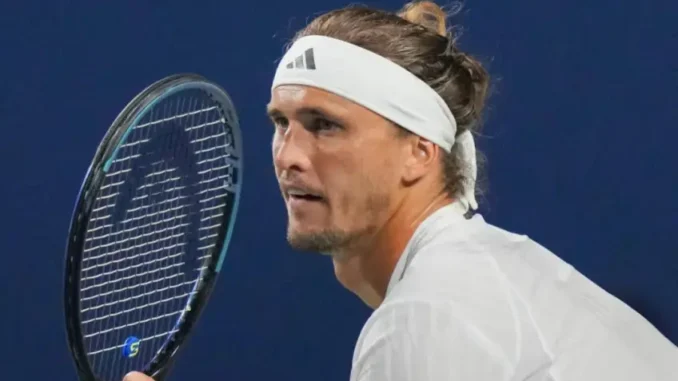
As the Cincinnati Open kicks into high gear, world No. 3 Alexander Zverev has sparked conversation with his candid remarks about the tournament’s newly renovated courts. The German star, a former champion at the event, expressed frustration with the dramatically slower surface at the Lindner Family Tennis Center in Mason, Ohio, especially with the US Open’s faster courts looming just weeks away. His comments, made during a press conference before his second-round match on August 10, 2025, highlight the challenges players face adapting to varying conditions in the crucial lead-up to the season’s final Grand Slam.
Zverev, who clinched the Cincinnati title in 2021 with a swift 6-2, 6-3 victory over Andrey Rublev, is no stranger to success at this ATP Masters 1000 event. However, the $260 million transformation of the tournament’s facilities, including 13 new courts and expanded green spaces, has altered the playing dynamics significantly. Once known for its lightning-fast conditions, Cincinnati’s courts have slowed considerably, a change Zverev finds perplexing. “Cincinnati was a very fast tournament in the past, but it’s become extremely slow now,” he said during his press conference. “I’m not sure what the reason behind this is the choice, especially since in New York the courts will be very fast again. I’m not a huge fan of this surface.” His remarks reflect a broader concern about the disconnect between Cincinnati’s conditions and those players will encounter at the US Open starting in late August.
The 28-year-old’s frustration comes on the heels of a solid but unsatisfying semifinal run at the Canadian Open in Toronto, where he fell to Karen Khachanov in a tight three-setter. Despite that loss, Zverev’s 2025 season has been impressive, with a 39-15 win-loss record, including a 15-5 mark on hard courts. His title in Munich and consistent performances at Masters 1000 events underscore his status as a top contender. Yet, the slower Cincinnati courts pose a unique challenge for Zverev, whose powerful serve and aggressive baseline game thrive on faster surfaces. “I just hope to play good tennis and get as far as possible,” he added, tempering his critique with a focus on adapting to the conditions.
Zverev’s debut in Cincinnati this year pits him against American wildcard Nishesh Basavareddy, a rising star ranked No. 110. The 20-year-old, fresh off a straight-set win over Aleksandar Vukic, presents an intriguing challenge on home soil. Zverev, however, remains the favorite, leveraging his experience and a career hard-court record of 217-102. His preparation for Cincinnati included an intensive training stint at Rafael Nadal’s academy in Mallorca under the guidance of Toni Nadal, a collaboration he credits for sharpening his aggression and mental resilience. “I’m trying to be braver, take more initiative,” Zverev noted, a mindset that nearly carried him to the Toronto final and one he hopes will translate to success in Ohio.
The Cincinnati Open’s transformation extends beyond the courts, with a new 2,000-seat sunken Champions Court, six indoor tennis courts, and enhanced fan amenities like a central pavilion with live entertainment. These upgrades aim to elevate the experience for players and spectators alike, but for Zverev, the slower surface remains a sticking point. His comments echo sentiments from other players, like Ben Shelton and Taylor Fritz, who recently criticized the fast courts in Toronto, highlighting the broader challenge of navigating surface changes during the hard-court swing. Zverev’s preference for faster conditions aligns with his past success in Cincinnati, where he reached the semifinals in both 2023 and 2024, and his 2021 title run showcased his dominance on quicker courts.
Despite his concerns, Zverev’s track record suggests he’s capable of overcoming the challenge. His 2024 season included a French Open final appearance and a Masters 1000 title in Rome, and he’s third in the ATP Live Race to Turin, eyeing a spot in the Nitto ATP Finals. A deep run in Cincinnati could bolster his confidence heading into New York, where he reached the 2020 US Open final and remains a perennial contender. Facing Basavareddy, Zverev will need to harness his powerful serve—averaging 6.1 aces per match with a 70.8% first-serve percentage—and dictate rallies to counter the slower surface.
As the tennis world watches, Zverev’s ability to adapt to Cincinnati’s new reality will be tested. His outspoken critique adds intrigue to his campaign, raising questions about how he’ll navigate the conditions against a hungry young opponent and potentially tougher foes like Carlos Alcaraz or Jannik Sinner later in the draw. Will Zverev channel his frustration into a title charge, or will the slow courts derail his momentum? With the US Open on the horizon, this Cincinnati run could set the tone for his Grand Slam aspirations, making every match a must-watch spectacle.
Leave a Reply